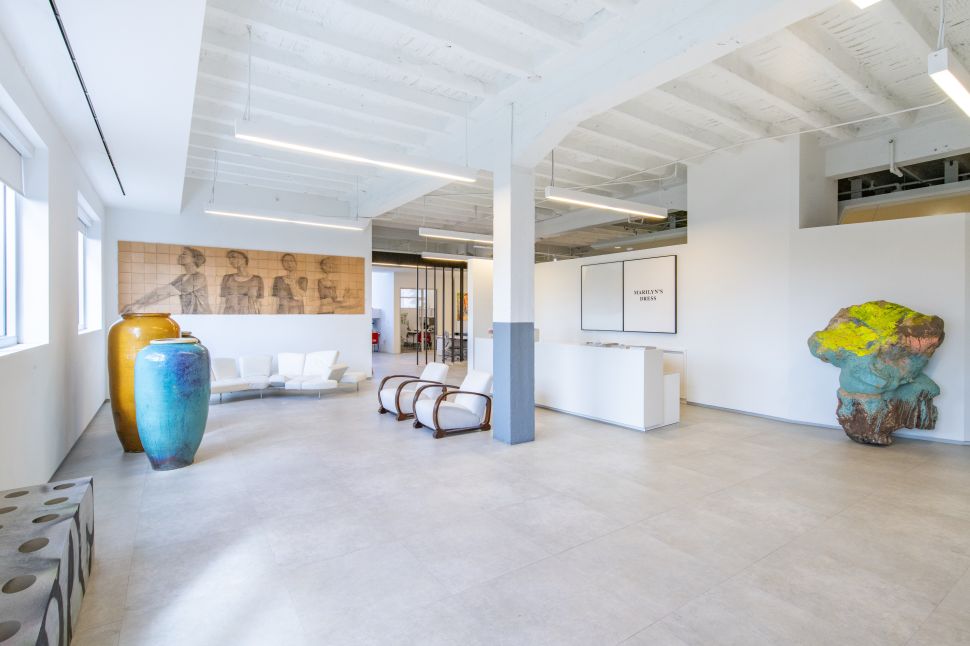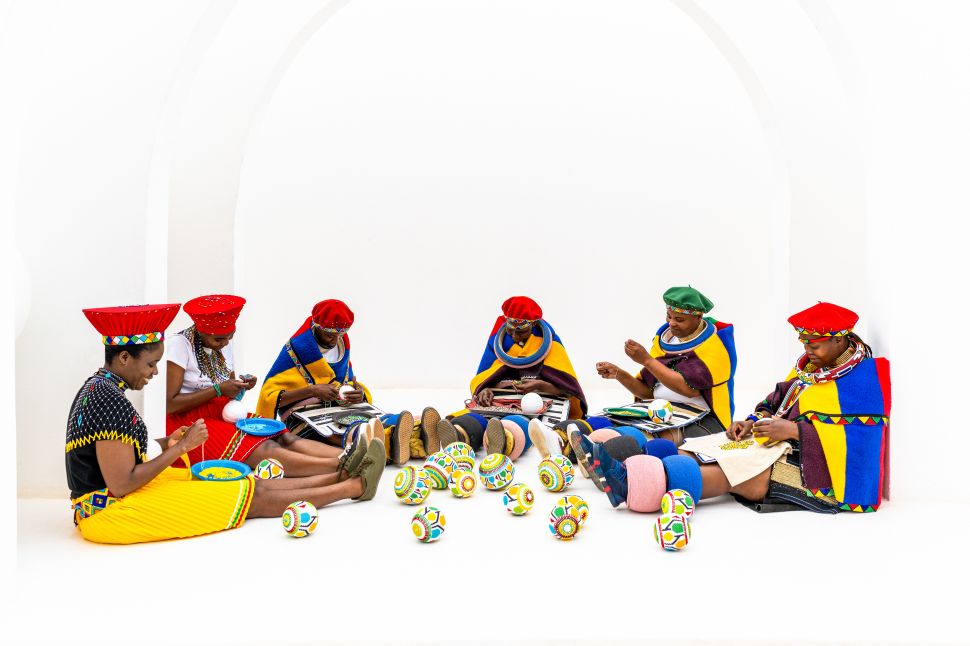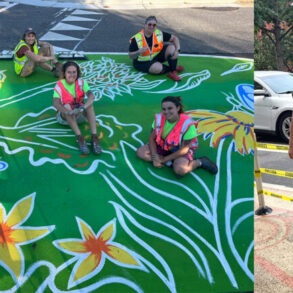
Entrepreneur and real estate developer Craig Robins has always had a talent for intertwining his passion for art and design with his business activities, and his ability to see creative opportunities where others see empty spaces has fueled a forward-thinking strategy that combines cultural and artistic growth with sustainable real estate investment. But Robins, the founder and co-owner of Design Miami, is best known to many as the visionary behind the Miami Design District, where he transformed an overlooked area of Downtown Miami into a thriving nexus for art, architecture, fashion and luxury hospitality.
Robins’ relationship with art began early and ambitiously: at just 19, while living in Barcelona, he purchased his first piece—a work by Salvador Dalí. Today, his collection has grown into a powerhouse, boasting over 1,200 pieces of contemporary art and groundbreaking design. Many of these works are showcased in rotating exhibitions at the headquarters of his real estate firm, Dacra, located in the heart of the Miami Design District. For over two decades, his commitment to the district has gone beyond business; his public art commissions have turned the neighborhood into a vibrant, open-air gallery. Highlights include a mural by John Baldessari, a sculpture by Brazilian designers the Campana Brothers and the first mural work by rising star Amani Lewis.
SEE ALSO: The Boundaries Between Art and Commerce Collapse in ‘Money on the Wall, Andy Warhol’
The latest jewel in this cultural crown is a large-scale mural by artist Bony Ramirez titled Musa Coccinea (2024), unveiled just ahead of Miami Art Week. Ramirez’s first public art project, the mural takes over the second floor of Palm Court, celebrating Caribbean culture and its enduring legacy. Meanwhile, this year’s Design Commission shines a spotlight on Nicole Nomsa Moyo, a Zimbabwean-born, South African-raised, Toronto-based architect and designer. Her project, inspired by the vibrant aesthetics of the Southern African Ndebele tribe, is a human-centric marvel. Jewelry-themed sculptures—including oversized pearls, a deconstructable necklace and a sprawling bracelet—adorn Paradise Plaza and Paseo Ponti. Created in collaboration with indigenous Ndebele women, this dynamic installation will be on display through March of next year.
As Miami gears up for another intense art week, Observer sat down with Craig Robins to explore how his passion for art and design continues to inspire his vision, drive his business success and leave an indelible mark on the city’s creative and cultural evolution.

You were instrumental in establishing Design Miami as a pioneering fair for contemporary design, and it now has editions in Basel and Paris. How has the definition and relevance of design evolved over the past decade, particularly within creative industries, hospitality and real estate?
Design today is a universal language that bridges the gap between disciplines, from technology and architecture to fashion and art. It’s not limited to aesthetics or functionality—it has become a cultural connector that sparks collaboration and innovation. For me, design is at the core of shaping human experiences, especially within the creative industries. In the hospitality and real estate sectors, thoughtful design transforms spaces into destinations, fostering a sense of community and elevating everyday interactions. It’s about creating environments that resonate emotionally while meeting practical needs. Design, in its broadest sense, can define how we live, work and connect with each other.
After founding the fair, you began developing the Miami Design District, now a key hub for the city’s culture and creative scene as well as a standout real estate success. What inspired the idea, and how have your original goals and vision evolved over time?
The idea for the Miami Design District stemmed from a desire to reimagine a neglected neighborhood into a cultural hub that would celebrate creativity in all its forms. Initially, the vision was to create a space where art, design and luxury could coexist harmoniously, offering both local and global audiences an unparalleled experience. Over time, the district has become much more than a real estate project—it has evolved into a living, breathing ecosystem where innovation thrives. Today, it’s a destination that fosters connections between art, fashion, food and architecture. It’s exciting to see how it continues to grow and adapt, constantly redefining what it means to be a creative and cultural hub in Miami.




Your significant contemporary art collection reflects a passion that seems to fuel your business ventures, inspiring you to uncover untapped opportunities and create fertile synergies across sectors. How has this artistic vision influenced your approach to business?
Collecting art has been a profound source of inspiration for me. It teaches you to see beyond the obvious and to recognize potential where others might not. This perspective has been instrumental in my business ventures, helping me identify untapped opportunities and foster connections between different sectors. Art’s ability to challenge conventional thinking encourages me to take risks and embrace innovation, whether we’re inviting artists to take over spaces in the Design District or developing real estate projects. It’s not just about acquiring pieces—it’s about integrating creativity into every aspect of what I do and ensuring that each venture contributes to more significant cultural dialogue.




My journey as a collector has been shaped by my personal experiences and the times we live in. Early on, I was drawn to iconic works by established artists, pieces that defined movements and set benchmarks in contemporary art. Over the years, my focus has shifted toward emerging voices, but I have kept a focus on historical pieces. Recently, I’ve been particularly interested in the works of Kai Althoff and Jana Euler, and some of my recent acquisitions include works by Richard Tuttle, Jill Mulleady, Mario Ayala, Karon Davis, Bony Ramirez, Alteronce Gumby and many others. These will all be exhibited as part of the rehang of my collection in our Dacra offices. We rotate the collection every year and open it to the public by appointment at the start of Miami Art Week.




Miami’s artistic and cultural ecosystem has grown significantly, fueled by Art Basel and the contributions of local collectors and patrons like yourself. With the Design District hosting a dynamic mix of fashion, design and art—alongside annual commissions, seasonal pop-ups and ICA Miami’s expansion—how do you see its future in Miami’s ever-growing art scene? Do you believe this growth can continue sustainably, or is the city at risk of over-saturation?
The Design District has always been about pushing boundaries and staying ahead of the curve. Its role in Miami’s art scene is pivotal, serving as a platform for innovation and a meeting point for global and local creatives. As it continues to grow culturally, the district will play an essential part in shaping Miami’s identity on the world stage. While growth is exciting, maintaining a balance is critical. It’s about curating the right mix of art, fashion, design and culinary experiences to keep the district fresh and authentic. I don’t see over-saturation as a risk if we stay true to our vision. Instead, I see the district continuing to evolve, setting new benchmarks and inspiring Miami’s next wave of cultural development.




This post was originally published on this site be sure to check out more of their content







